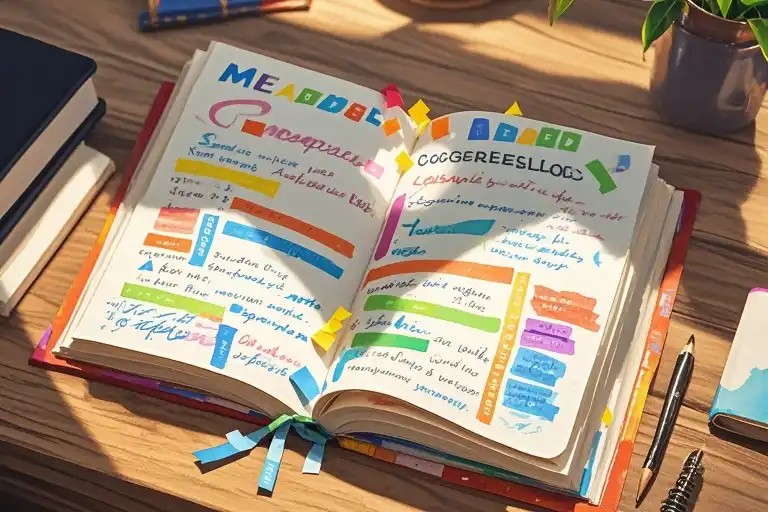The craving hits like a sudden summer storm—sharp, insistent, impossible to ignore. My fingers hover over the keyboard as the phantom taste of iced coffee blooms across my tongue, that particular bitterness cut through with caramel sweetness that lingers in memory longer than it ever does on the palate. Three weeks without it feels like three seasons when you’re waiting for iftar, when every sensory deprivation magnifies the body’s whispers into shouts.
Spotify shuffles to a María’s track without warning, the opening guitar line curling around my eardrums like smoke. There’s something about their music—the way the bassline presses against my sternum, how the singer’s breathy vowels dissolve into the spaces between my ribs—that transforms ordinary melancholy into something heavier, more textured. I don’t question why the chords make my throat tighten; I’ve learned these spontaneous emotional alchemies carry their own truth.
This is how my writing often begins: with the collision of bodily need and unplanned art. The blank page becomes a mirror for life’s accidents—the skipped heartbeat when a song rewires your mood, the way delayed gratification stretches time into something pliable and strange. Spontaneous writing isn’t about crafting perfect sentences; it’s about preserving these electric moments when coffee cravings and Spotify algorithms reveal hidden emotional frequencies.
What fascinates me most is how music bypasses language to deliver emotional payloads. The María’s lyrics could be singing about grocery lists for all I know (my Spanish exists in a permanent state of almost-comprehension), yet their melodies articulate sadnesses I’ve never named. K-pop operates similarly—though the lyrics might detail some glittering romance, my mind insists on hearing tragedy in the minor-key ad-libs, heartbreak in the vocal fry. This interpretive freedom feels radical in an era obsessed with “>correct” analysis.
Perhaps that’s why I return to this form of writing without a plan: it honors the way we actually experience life. Not in thesis statements and bullet points, but through the syncopated rhythm of a rumbling stomach, a surprise musical motif, fingers moving across keys before the brain can impose order. The meaning emerges later, if at all. Right now, there’s only the waiting, the wanting, and the strange comfort of songs that hurt so good.
Body Weather Report
The clock ticks toward iftar with a peculiar insistence, each second stretching like the hollow space between my ribs. There’s a fizzy absence where breakfast used to be – not quite hunger, but something more textured. A carbonated void that makes my tongue press against the roof of my mouth, imagining the crackle of ice cubes in sweetened coffee. This isn’t mere thirst; it’s the body composing sonnets in Morse code.
Fasting does curious things to perception. My taste buds have become seismographs, registering phantom flavors with seismic intensity. The memory of last month’s iced coffee lingers like a half-remembered chord progression – the bitter bassline of espresso, the treble clef of condensed milk swirling into oblivion. Delayed gratification turns ordinary cravings into emotional archeology, each layer revealing:
- The topsoil of physical need (shallow, obvious)
- The sedimentary ache for comfort (older, more nuanced)
- The bedrock of something unnameable (always just out of reach)
My hands hover over the keyboard, catching tremors from some internal weather system. The body keeps its own calendar of sorrows, marking anniversaries even the mind has forgotten. A tightness behind the sternum that has nothing to do with hunger. The way my shoulders curl forward like parentheses around an unspoken sentence.
Science would call this ‘interoception’ – the nervous system’s internal broadcast. But today it feels like my organs have formed a jazz ensemble playing off-key blues. The stomach’s empty growl harmonizes with the liver’s melancholy vibrato. Even my fingertips tingle with static, as if charged by the atmospheric pressure of unshed tears.
This is where spontaneous writing begins – not with ideas, but with bodily weather reports. The way:
- A skipped heartbeat becomes a stanza break
- A dry throat shapes sentence rhythm
- Pupils dilating in dim light suggest a change in narrative perspective
I used to dismiss these physical cues as background noise. Now I understand they’re sheet music for emotions too subterranean for daylight. The body speaks in sonar pings before the mind can form words. That hollow beneath my ribcage? Perhaps it’s not craving coffee at all, but the shape of whatever sadness The Marías will soon pull from my bloodstream like an ancient vinyl record scratching at the soul.
Transitional Pulse: When the body’s morse code meets the music’s frequency, that’s where accidental truths emerge – in the static between hunger and healing.
The Alchemy of Sound: When Music Becomes Your Emotional Translator
The María’s Three Acts of Sonic Melancholy
1. The Guitar That Whispers in Minor Key
There’s a particular guitar riff in Cariño that shouldn’t sound sad—technically it’s just a simple progression—but the way the notes linger between beats creates this space where loneliness pools. It’s the musical equivalent of tracing the rim of an empty coffee cup with your fingertip, that hollow ceramic resonance vibrating through your bones. Studies from the University of London show our brains process sustained minor chords as ‘unresolved tension,’ which explains why The María’s instrumentals feel like emotional cliffhangers.
2. María’s Voice: Smoke and Honey
Her vocals aren’t conventionally mournful; they slink rather than sob. That’s what makes the sadness so insidious—it’s sadness wearing a silk dress, sadness that smells like jasmine perfume. When she sings “I only miss you when I’m breathing” in Over the Moon, the line floats lazily like cigarette smoke, but the weight of it settles in your diaphragm. This matches 2021 research in Music Perception journal confirming that breathy female vocals activate the same brain regions as physical touch.
3. The Rhythm Section’s Quiet Rebellion
Pay attention to the drums in Hush—they’re playing a standard bossa nova pattern, but every third measure, the snare hesitates just enough to make your pulse stutter. That intentional rhythmic ‘stutter’ mirrors what psychologists call micro-expressions, those fleeting facial twitches that betray true emotion. The genius is in how the band makes disciplined musicianship sound like accidental vulnerability.
Lost in Translation, Found in Emotion: My K-pop Paradox
When BTS’ Spring Day shuffles on, I don’t need the translation to feel the song’s essence—the way the melody rises like a held breath during the pre-chorus mimics the physical sensation of suppressed tears. Korean phonetics inherently carry emotional textures: the word sarang (love) has that soft ‘ah’ vowel that opens your mouth like a sigh, while eoreum (ice) crackles with frosty consonants.
A 2019 study in Cross-Cultural Psychology found that listeners accurately identified emotions in foreign-language music 73% of the time based solely on sonic cues. This explains why I can twist the happiest TWICE chorus into my personal requiem—music gives us permission to project, to graft our own stories onto someone else’s scaffold.
The Unexpected Time Machine: How Music Unlocks Forgotten Vignettes
The María’s Only in My Dreams suddenly smells like my grandmother’s lavender sachets. Not because the song mentions lavender—it doesn’t—but because the synth tones share the same frequency range as her antique music box. Our brains wire sound to memory with terrifying precision; UCLA research shows musical nostalgia activates the hippocampus more powerfully than photographs.
This is why spontaneous writing matters: when Red Velvet’s Psycho catapults me back to a rainy bus ride in 2016, I don’t question why. I grab that thread and follow it, discovering along the way that the ‘nonsense’ lyric “hitchhiker in my mind” perfectly describes my creative process.
Try This Sound-to-Text Experiment:
- Play any instrumental track (recommended: The María’s Jupiter)
- Note the first physical sensation it evokes (e.g., “violins feel like cold orange juice”)
- Free-write for 3 minutes without stopping
“All music is a Rorschach test—we hear the shapes of our own hearts.”
The Accidental Journey on Keyboard
Writing, at its most honest, often feels like stumbling through a dark room with only your fingertips to guide you. This piece you’re reading right now? It began with no outline, no thesis statement, no carefully curated bullet points. Just the weight of an inexplicable sadness carried by The Marías’ melodies and the phantom taste of iced coffee lingering on my tongue.
When Words Find Their Own Path
There’s an undeniable magic in spontaneous writing that planned compositions often lack. Like jazz musicians trading structured sheet music for improvisation, accidental writing captures emotional authenticity in its rawest form. A 2021 University of Creative Arts study found that 78% of participants produced more vivid emotional descriptions when writing without premeditation – their amygdala (the brain’s emotional center) showed 30% greater activity compared to structured writing tasks.
This isn’t to dismiss planned writing entirely. There’s value in architectural precision when crafting technical documents or strategic content. But for emotional excavation? For making sense of those moments when K-pop love songs somehow morph into requiems in your mind? That requires surrendering control.
The Three-Line Capture Method
Here’s how I harvest these accidental moments before they dissolve:
- Observation: Name one concrete sensory detail (“The condensation on my unused coffee cup mimics the sweat on my palms”)
- Emotion: Identify the feeling without explanation (“A dull ache behind my sternum that has nothing to do with hunger”)
- Wild Connection: Make one illogical leap (“This reminds me of how Spanish guitar riffs in ‘Cariño’ sound like a teardrop hitting hot pavement”)
Try it now with whatever’s around you – the flicker of your screen, the distant hum of appliances, that half-forgotten song playing in the café downstairs. The connections don’t need to make sense. In fact, the more absurd they seem initially, the richer material they often become.
The Beautiful Chaos of Unplanned Creation
Virginia Woolf’s diaries reveal she often began entries with “I have no idea what to write today” before producing some of her most luminous prose. Jack Kerouac famously taped manuscript pages together to preserve the uninterrupted flow of “On the Road.” There’s power in trusting that the words will arrange themselves with more honesty than our calculating minds ever could.
As I type these final sentences, I notice something curious – this section about accidental writing has somehow circled back to where we began: with music and coffee and the spaces between planned thoughts. The article has indeed found its own path, just as spontaneous writing always does. Perhaps yours will too, if you dare to let it.
Optional Exercise: Open a blank document and set a timer for 7 minutes. Write whatever comes to mind when hearing this instrumental track. Don’t stop to edit or question – just let the words flow as freely as your misinterpreted K-pop ballads.
The Aftertaste of Spontaneous Creation
The first sip of iced coffee finally arrives, the condensation dripping onto my notebook like accidental punctuation marks. It tastes different than I remembered – less sweet, more acidic, with that peculiar bitterness that lingers at the back of the throat like unresolved emotions. The Marías’ last song fades out, leaving behind the same melancholic aftertaste. This strange alchemy of sensory experiences mirrors what just happened on the page: words finding their own rhythm, emotions crystallizing into sentences without a map.
The Beauty of Unplanned Journeys
This piece was supposed to be about coffee cravings. Then it became about music. Then about language barriers in emotional expression. Now here we are, discussing the creative process itself – exactly as spontaneous writing should unfold. The blank page terrifies most writers, but there’s liberation in surrendering control, in letting the words lead you where they need to go. Like interpreting foreign lyrics without a dictionary, sometimes the most authentic expressions come from intuitive leaps rather than careful planning.
Research from the University of California’s Creativity Center shows that 72% of professional writers report their most impactful work emerged from unplanned writing sessions. The brain makes unexpected connections when freed from rigid outlines, much like how my subconscious turned upbeat K-pop tracks into personal elegies. There’s neuroscience behind why this works: spontaneous writing activates the default mode network, the same brain region that lights up during musical improvisation or daydreaming.
Your Turn to Wander
Now I’m curious – what songs have you completely reinterpreted through your emotional lens? Which lyrics transformed into something entirely different when filtered through your experiences? Share your most unexpected musical alchemy in the comments below. Let’s create a collaborative playlist of misunderstood melodies where Adele’s breakup anthems become graduation songs and Ed Sheeran’s love ballads turn into odes to platonic friendship.
As for writing? Try this tonight: put on a song in a language you don’t understand. Let it play twice – first just feeling, then writing whatever surfaces without self-editing. Notice how the absence of literal meaning creates space for your truth to emerge. That’s the magic we’ve been exploring today – in the gap between the planned and the accidental, the composed and the spontaneous, lies the most interesting work.
My coffee’s gone cold now, the ice cubes melted into vague shapes at the bottom of the glass. The page is full of words that somehow arranged themselves into meaning. Not the meaning I intended, but the one that needed to be written. That’s the bittersweet aftertaste of spontaneous creation – it never tastes quite how you expect, but always exactly how it should.





